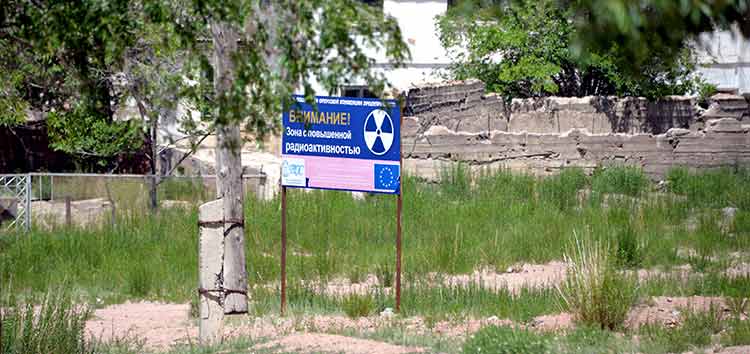ASTANA – A joint mission of the European Commission (EC) and European Bank for Reconstruction and Development (EBRD) visited Kyrgyzstan March 28-31 with the aim of solving the problems the uranium production legacy poses to the country’s environment. Min-Kush, Shekaftar and Mailuu-Suu were defined as top priority sites for environmental remediation.
“We appreciate the genuine commitment of the EC and the EBRD to support Kyrgyzstan in addressing the threat the uranium production legacy poses to the environment and the people in the Central Asian region, as urgent measures are needed for the sites in Mailuu-Suu, Min-Kush and Shekaftar, where environmental instability still exists,” said Kyrgyz Minister of Emergency Situations Kubatbek Boronov, according to an EBRD press release.
“I am confident that today we have reached the next stage of our cooperation, where we can tackle the problems through specific programmes and projects aimed at protecting human health and the environment, both at the national and regional levels,” he added.
“The environmental remediation in Kyrgyzstan is part of the EU’s overall environmental strategy for Central Asia. Addressing the legacy of uranium mining will assist the Kyrgyz Republic in achieving the UN Sustainable Development Goals by improving the living conditions of the people affected by these legacy sites,” said EU delegation head to Kyrgyzstan Ambassador Cesare de Montis.
The multilateral Environmental Remediation Account for Central Asia (ERA) was established to address the threat the uranium production legacy poses to the environment, but corresponding agreements haven’t been signed yet by Kyrgyzstan, Tajikistan and Uzbekistan. The first examination of two sites in Kyrgyzstan showed remediation would cost an estimated $32 million.
EBRD Nuclear Safety Deputy Director Balthasar Lindauer said discussions with the Kyrgyz government were very open and fruitful. He added the government has agreed to participate in the programme and play an active role in implementing it.
At present, the parties have developed a strategic master plan, specifying top priority uranium legacy sites and the estimated cost of the remediation work. The plan ensures that works take place using the highest level of international standards and best practices. It was developed under the leadership of the International Atomic Energy Agency (IAEA) together with experts from the affected countries and the international community.
The EU’s efforts in environmental remediation in the Central Asian region are part of the overall EU-Central Asia strategy. The efforts aim at facilitating the rehabilitation of radioactive and contaminated uranium production sites to mitigate environmental and public health risks. The EU has provided $9.6 million for feasibility studies and detailed environmental impact assessments at the top priority sites. At that, the EU allocated $17.6 million to ERA and is seeking to improve nuclear safety culture, responsible safe management of nuclear waste and nuclear safeguards worldwide.

